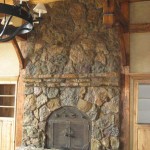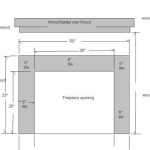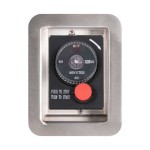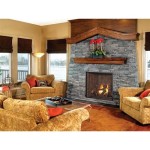Fireplace Wall Design: Integrating Warmth and Aesthetics
The fireplace, traditionally a functional necessity, has evolved into a focal point in residential architecture. A well-designed fireplace wall enhances the ambiance of a room, provides a source of warmth, and serves as a canvas for expressing personal style. The integration of a fireplace within a wall design requires careful consideration of spatial constraints, material selection, and aesthetic preferences. This article explores key aspects of fireplace wall design, offering insights into creating a harmonious and visually appealing feature within a living space.
Understanding Spatial Considerations
The size and layout of the room are paramount when planning a fireplace wall. In smaller rooms, a large, imposing fireplace wall can overwhelm the space, creating a sense of claustrophobia. Conversely, a small, understated fireplace in a large room might get lost and fail to make the intended impact. Proportionality is therefore essential. The dimensions of the fireplace wall should be carefully calculated in relation to the overall room size, the height of the ceiling, and the placement of other furniture.
The location of the fireplace wall is another critical factor. It should be positioned in a manner that allows for optimal heat distribution while also serving as a natural focal point. In many living rooms, the fireplace wall is located opposite the main seating area, allowing occupants to enjoy the warmth and visual appeal of the fire. However, consideration should also be given to the placement of windows and doors, as well as the flow of traffic through the room.
Furthermore, building codes and safety regulations must be strictly adhered to when designing a fireplace wall. Clearances from combustible materials are typically specified for different types of fireplaces, and proper ventilation is essential to prevent the buildup of harmful gases. Consulting with a qualified contractor or building inspector is crucial to ensure that the fireplace wall design complies with all applicable regulations.
Material Selection and Aesthetic Choices
The choice of materials for a fireplace wall significantly impacts its overall aesthetic. A wide range of materials can be used, each offering a unique look and feel. Brick, stone, tile, wood, and metal are all popular choices, and the selection often depends on the desired style of the room and the homeowner's personal preferences.
Brick, for example, evokes a sense of rustic charm and traditional warmth. It can be used in a variety of patterns and colors to create different visual effects. Stone, on the other hand, offers a more natural and organic look. Natural stone can be sourced from local quarries, while manufactured stone provides a more uniform and cost-effective alternative. Tile offers a versatile option, with a wide range of colors, patterns, and textures available. It can be used to create intricate designs or to provide a clean and contemporary look.
Wood adds warmth and character to a fireplace wall. It can be used as a mantel, as paneling, or as a decorative accent. Different types of wood, such as reclaimed wood, hardwoods, and softwoods, offer varying degrees of durability and aesthetic appeal. Metal, such as steel or copper, can be used to create a sleek and modern fireplace wall. It can be incorporated as a frame for the fireplace, as decorative accents, or as a complete wall covering.
The color palette chosen for the fireplace wall should complement the existing décor of the room. Neutral colors, such as white, gray, and beige, provide a versatile backdrop that can be easily coordinated with other furnishings. Bold colors, such as red, blue, or green, can be used to create a dramatic and eye-catching focal point. The use of contrasting colors can also add visual interest and depth to the fireplace wall.
Integrating Functional Elements
A well-designed fireplace wall should not only be aesthetically pleasing but also functional. Integrating storage solutions, media components, and other functional elements can enhance the usability of the space and create a more organized and efficient living environment.
Storage can be incorporated into the fireplace wall design in a variety of ways. Built-in shelves can be used to display books, decorative items, or media equipment. Cabinets can be used to conceal electronics, store firewood, or house other household items. The placement of storage elements should be carefully considered to maintain a balanced and aesthetically pleasing composition.
The integration of media components, such as televisions and sound systems, is a common feature in modern fireplace wall designs. The television can be mounted above the fireplace or integrated into a recessed niche. Wiring should be concealed to maintain a clean and uncluttered look. Sound systems can be integrated into the wall, providing high-quality audio without compromising the aesthetic appeal of the space.
In some cases, the fireplace wall can also be designed to incorporate other functional elements, such as seating or lighting. A built-in bench or window seat can provide additional seating space, while strategically placed lighting can enhance the ambiance of the room and highlight the architectural features of the fireplace wall. Recessed lighting, spotlights, and sconces can all be used to create different lighting effects.
Beyond seating and storage, consider the practicality of cleaning and maintenance. The materials chosen should be easy to clean and resistant to staining. Access panels should be incorporated into the design to allow for easy maintenance of the fireplace and any integrated appliances. Furthermore, consider the long-term durability of the materials and their resistance to wear and tear.
Lighting and Ambiance
Lighting plays a crucial role in enhancing the ambiance of a fireplace wall. The interplay of light and shadow can accentuate the textures of the materials used and create a warm and inviting atmosphere. A combination of natural and artificial lighting should be considered to achieve the desired effect.
Natural light can be maximized by positioning the fireplace wall near windows or skylights. The natural light will illuminate the fireplace and the surrounding area, creating a bright and airy feel. However, care should be taken to avoid direct sunlight, which can fade or damage certain materials. Window treatments, such as blinds or curtains, can be used to control the amount of natural light entering the room.
Artificial lighting can be used to supplement natural light and to create a variety of lighting effects. Recessed lighting can provide general illumination, while spotlights can be used to highlight specific features of the fireplace wall. Sconces can add a touch of elegance and provide ambient lighting. Dimmable lighting controls allow for adjusting the brightness of the lights to create different moods and atmospheres.
The type of light bulbs used can also affect the ambiance of the room. Warm-toned light bulbs, such as incandescent or halogen bulbs, create a cozy and inviting atmosphere. Cool-toned light bulbs, such as LED or fluorescent bulbs, provide a brighter and more modern look. The choice of light bulbs should be based on the desired aesthetic and the overall lighting scheme of the room.
Incorporating Architectural Details
Architectural details can add character and sophistication to a fireplace wall. Crown molding, wainscoting, and other decorative elements can be used to enhance the architectural style of the room and create a more refined and polished look.
Crown molding can be used to trim the top of the fireplace wall, adding a touch of elegance and formality. The style of the crown molding should be consistent with the overall architectural style of the room. Wainscoting can be used to cover the lower portion of the fireplace wall, providing a decorative and protective surface. Different types of wainscoting, such as raised-panel, flat-panel, and beadboard, offer varying degrees of formality and visual interest.
Other decorative elements, such as corbels, pilasters, and mantels, can also be used to enhance the architectural details of the fireplace wall. Corbels are decorative brackets that can be used to support the mantel or other architectural features. Pilasters are decorative columns that can be used to frame the fireplace or to add visual interest to the wall. The mantel serves as a focal point above the fireplace, and it can be decorated with candles, photographs, or other decorative items.
The choice of architectural details should be carefully considered to ensure that they complement the overall design of the room. Overly ornate or elaborate details can overwhelm the space, while simple and understated details can create a more subtle and refined look. A cohesive and well-integrated design will result in a fireplace wall that is both visually appealing and architecturally sound.
Consider the room's existing architectural style. A modern room will benefit from clean lines and minimalist details, while a traditional room might call for more ornate and classical elements. The architectural details should seamlessly blend with the existing features of the room to create a unified and harmonious aesthetic.

36 Fireplace Decor Ideas Modern Mantel

Fireplace Wall Designs Photos Ideas Houzz

13 Stunning Fireplace Accent Wall Ideas For Your Home Carla Bast Design

21 Fireplace Upgrades For Any Room Small Living Decor Feature Wall With

Fireplace Ideas Stone Creek Furniture

Design Dilemmas How To A Great Room Fireplace Wall With Built Ins And Television Interior Designer Des Moines Jillian Lare

Fireplace Ideas Stone Creek Furniture

40 Fabulous Fireplace Design Ideas For Any Budget Or Style

Best Modern Fireplace Designs Blaze

Slat Fireplace Design A White Oak Adds Warmth And Interest To This Large Space Great Rooms








